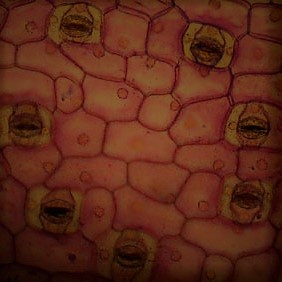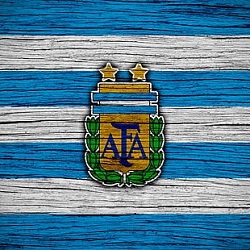PLANT TISSUE
A tissue is a group of cells having a similar structure and function is called a tissue. It may also be defined as ” a group of cells having a common origin and co-operating with one another to perform similar functions is described as tissue.” The tissues are of two types depending on the constitution of cells. They are-Simple tissue and Complex tissue. The simple tissue is made up of similar cells and carries out the same function. On the contrary, the complex tissue is made up of two or more cells which are aggregated since the beginning and perform a similar function. The plant tissue is composed of three basic systems- Dermal, Vascular and Ground and Fundamental. The dermal function includes the epidermis that performs a protective function. The phloem and xylem are vascular tissues and they perform conduction of water and minerals. Ground and fundamental tissues perform all functions except dermal and vascular.
TYPES OF PLANT TISSUES
On the basis of division potential, the plant tissues are divided into two categories-
- MERISTEMATIC PLANT TISSUE.
- PERMANENT PLANT TISSUE.
- MERISTEMATIC PLANT TISSUE– It is a simple tissue composed of a group of similar and mature cells which can divide and form nee cells.
- IMPORTANT FEATURES OF MERISTEMATIC CELLS
- Ability to divide and grow.
- Small immature cells.
- Isodiametric, rounded, oval or polygonal.
- Absence of intercellular spaces.
- Walls are thin, elastic and made of cellulose.
- The nucleus is conspicuous.
- The cytoplasm is dense.
- Vacuoles are absent or if present then is very small.
- Crystals are absent.
- The endoplasmic reticulum is small.
- Proplastids are present instead of plastids.
- Rate of respiration is very high.
- The mitochondria have a simple structure.
- There is large scale synthetic activity.
- The food reserve is little.
- The cells of cambium are however slightly different. They possess large vacuoles and are elongated.
CLASSIFICATION OF MERISTEM
Based on their location and functions the meristems are of two kinds. These are-
- APICAL MERISTEM.
- LATERAL MERISTEM.
Apical meristems are found at the tips of shoots and roots whereas lateral meristems include cambium and cork cambium. They bring about an increase in the width or girth of the organs. The third type of meristems is called Intercalary Meristems. They are found in monocotyledons, particularly grasses, at the base of internodes and leaf sheath.
- PERMANENT TISSUE– The permanent tissues are those tissues, the cells of which have lost the capacity to divide and have attained a permanent shape, size and function due to morphological, biochemical and physiological differentiation. on the basis of origin, the permanent tissues are of two types-
- SIMPLE PERMANENT TISSUE– A simple permanent tissue is made up of similar permanent cells that carry out same function or set of functions.
- TYPES OF SIMPLE PERMANENT TISSUE
- EPIDERMIS.
- PARENCHYMA-MEANS BESIDES.
- COLLENCHYMA- MEANS GLUE.
- SCLERENCHYMA-MEANS HARD.
- TYPES OF SIMPLE PERMANENT TISSUE
- EPIDERMIS– The outermost layer is generally one-celled thick. The aerial parts of the plant, the outer walls of the epidermis have a waxy covering called Cuticle. It protects from water loss, mechanical injury and invasion by a pathogen, In some plants the aerial parts bear one to many-celled hairs or glands which perform the function of secretion. The epidermis of stem and leaves in green plants have small openings called stomata.
- PARENCHYMA– The parenchymatous cells are thin-walled, 12-14 sides and of different shapes. They have the ability to divide at maturity and their main function is storage.
- TYPES OF PARENCHYMATEOUS CELLS
- CHLORENCHYMA-Carry out photosynthesis.
- AERENCHYMA– Found in aquatic plants, with a system of intercellular air spaces.
- COLLENCHYMA– The cells of this tissue appears to be polygonal in shape when seen under the microscope. They have an unevenly thick wall and are prominent in the corners. Their main function is to provide strength and flexibility to growing organs like a young stem.
- SCLERENCHYMA– The tissue is composed of dead cells, with thick and dignified walls. They provide mechanical support to the plant under stress.
- TYPES OF SCLERENCHYMA
- FIBRES– The fibres are elongated cells with tapered endings.
- SCLEREIDS– Sclereids are Irregular in shape, thick-walled with a narrow lumen.
- TYPES OF SCLERENCHYMA
- TYPES OF PARENCHYMATEOUS CELLS
- COMPLEX PERMANENT TISSUE– The complex permanent tissue contains more than one type of cells. All types of cells of complex tissue work as a unit.
- TYPES OF COMPLEX PERMANENT TISSUE-
- PHLOEM– Phloem is a complex tissue which transports organic material inside a plant body. Blast is the other name of phloem. It is made up of Sieve Elements (mature sieve element is living but it lacks nucleus). The sieve elements are of two types-
- SIEVE CELLS– Found in lower plants. In sieve cells, the opening is in a certain area of the cell wall occurs throughout the end walls and lateral walls.
- SIEVE TUBE MEMBERS– found in angiosperms. In sieve tube member, a large opening occurs mainly on the end walls. In sieve-tube members are associated with Companion cells. The are parenchymatous and help in translocation of food.
- XYLEM– Xylem is also called as wood. It is a complex tissue which transports water or sap in a plant. Simultaneously it also provides mechanical strength. The conducting cells of xylem are called Tracheary Elements. These are of two types-
- TRACHEIDS– They predominate in the lower vascular plants.
- VESSELS– They are found in angiosperms.
- Both tracheids and vessels have a thick and dignified wall. The thin areas are called as Pits. Vessels have openings in their end walls. These openings are called as perforation. If there are many perforations in the end wall then it is called as Multiperfortation Plate and if it has a single opening then it is called as Simple Perforation. Perforations are absent in tracheids.
- PHLOEM– Phloem is a complex tissue which transports organic material inside a plant body. Blast is the other name of phloem. It is made up of Sieve Elements (mature sieve element is living but it lacks nucleus). The sieve elements are of two types-
- TYPES OF COMPLEX PERMANENT TISSUE-
- SIMPLE PERMANENT TISSUE– A simple permanent tissue is made up of similar permanent cells that carry out same function or set of functions.







